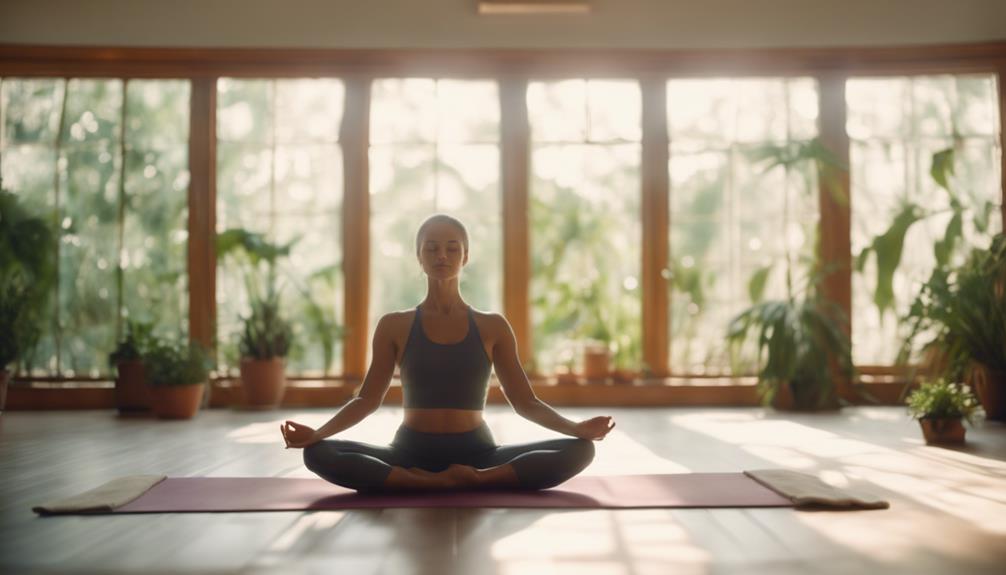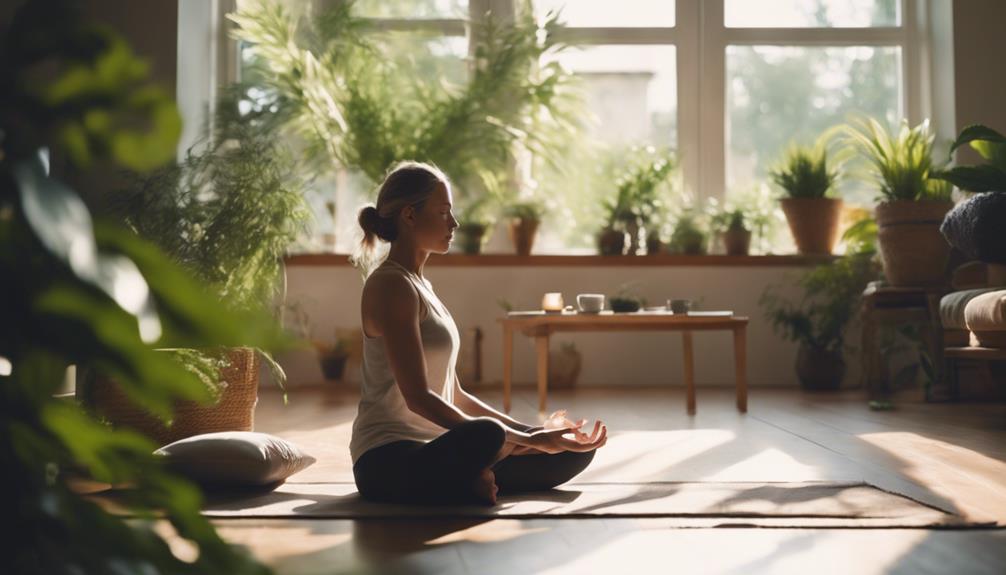Is it valid or not that you are new to the universe of yoga and wanting to dunk your toes into the practice? Starting a yoga typical as a fledgling can be startling, however fear not! There are a few fundamental poses that are undeniably appropriate for those basically starting. These poses are ideal for building strength, growing flexibility, and further creating overall balance both physically and mentally.
1.Mountain pose: foundation for balance and posture
While starting with yoga, spreading out serious areas of strength for a for your practice is huge. The mountain pose, generally called Tadasana, is an exceptional spot to begin. This fundamental yet solid pose lays out the energy for suitable alignment, balance, and posture in your yoga practice.
To practice the mountain pose, start by standing tall with your feet hip-width isolated. Press steadfastly into the four corners of your feet, attracting your leg muscles and lifting through your inward arches. Keep your spine long and your shoulders relaxed, drawing them down away from your ears. Join your hands at your heart local area in a solicitation position, or grow them nearby your body with your palms facing forward for a more open posture.
As you hold the mountain pose, revolve around your breath. Breathe in deeply, expanding your chest and gut, and breathe out slowly, drawing in your navel towards your spine. Feel laid out through your feet as you stretch out through the crown of your head, making a sensation of both strength and straightforwardness in your body.
The mountain pose could have all the earmarks of being fundamental, however it is the foundation for some other yoga poses. By practicing this pose reliably, you can chip away at your balance, posture, and by and large body mindfulness. It assists with strengthening the muscles in your legs, core, and back, while furthermore extending your mental focus and obsession.
Despite its physical benefits, the mountain pose can likewise influence your mind. By standing tall and strong like a mountain, you can foster a sensation of inner steadfastness and flexibility. This pose can assist you with feeling more engaged and connected with the ongoing second, allowing you to give up stress and distractions.
Accepting at least for now that you’re new to yoga, feel free to take as much time as is required with the mountain pose. Base on finding alignment in your body and breath, and focus on how it feels in your own unprecedented body. Review that yoga is a journey, and it’s basic to regard where you are in your practice without judgment or connection with others.
As you continue to practice the mountain pose, you could start to see upgrades in your balance, posture, and sensation of success, as a rule. You could find that you stand taller and move even more flawlessly throughout your day. Furthermore, specifically, you could begin to foster a deeper relationship with yourself and to your overall environmental factors.
So next time you step onto your yoga mat, stop briefly to find your mountain pose. Ground yourself at the present time, stand tall with strength and elegance, and breathe deeply into the power of your own being. Embrace the foundation that the mountain pose gives, and let it support you on your journey towards more unmistakable balance and alignment in both body and mind.
2.Downward dog: stretch and strengthen your entire body
The downward dog pose is one of the most notable and reasonable yoga poses for fledglings. It is an exceptional technique for stretching and strengthen your entire body, making it a staple in various yoga plans.
Exactly when you at first start practicing downward dog, you could find it attempting to hold the pose for an excessively long timeframe. However, with consistent practice, you will persistently build strength and flexibility in your body.
To get into downward dog, start your hands and knees with your wrists directly under your shoulders and your knees under your hips. Spread your fingers wide and press undauntedly into the mat as you lift your hips up towards the rooftop. Fix your arms and legs however much as could be anticipated, and endeavor to bring your heels down towards the mat.
In downward dog, you will feel a deep stretch in your hamstrings, calves, and back. This pose also assists with opening up your shoulders and strengthen your arms and core muscles. It might be an exceptional technique for conveying strain in your body and work on your overall flexibility.
As you hold the pose, base on keeping a reliable breath and interfacing with your muscles. You could feel some burden all along, however endeavor to relax into the pose and breathe through any energies of coziness.
Accepting you are new to yoga, it is crucial for focus on your body and not move yourself exorbitantly hard. It is alright to change the pose by winding your knees barely or using a prop like a block under your hands if vital. Over an extended time, you will find that downward dog turns out to be more direct and you can hold it for longer timeframes.
Despite the physical benefits, downward dog can likewise assist with calming the mind and lessening stress. By focusing on your breath and being accessible at that point, you can foster a sensation of inward harmony and relaxation.
Incorporating downward dog into your everyday yoga practice can assist you with additional fostering your overall flourishing and upgrade your physical fitness. Whether you are a fledgling or a painstakingly pre-arranged yogi, this pose is a significant extension to any yoga plan. So next time you do your mat, make sure to recall downward dog for your progression and participate in the many benefits it offers that would be useful.
3.Warrior I: build strength and unfaltering quality in your legs
Warrior I is a fundamental yoga pose that gives an uncommon entryway to youngsters to strengthen their legs and augmentation security in their practice. This pose attracts the muscles in your legs, core, and arms, assisting with chipping away at as a rule and strength.
To practice Warrior I, start at the front of your mat with your feet hip-width isolated. Step your right foot back around 3-4 feet, keeping your toes pointed to some degree inside. Contort your front knee to a 90-degree point, guaranteeing your knee is following over your lower leg. Push down through the outer edge of your back foot and attract your core to lift your arms up above, palms facing each other. Keep your shoulders relaxed and look forward.
Warrior I is major areas of strength for a that can assist with building fit muscle mass in your legs, especially in the quadriceps, hamstrings, and glutes. By holding the pose for a few breaths, you can build the persistence of these muscles, provoking additionally evolved strength and sufficiency in your legs over an extended time.
As well as building physical strength, Warrior I moreover requires mental focus and obsession. As you hold the pose, endeavor to keep a steady breath and a quiet mind. This can assist you with staying present at that point and foster mindfulness in your practice.
One assortment of Warrior I that can furthermore upgrade leg strength and constancy is to add a gentle reshape. From the ordinary Warrior I position, convey your hands to heart concentration and wind your center to the right, putting your left elbow apparently of your right thigh. Press your palms together to deepen the twist, while at this point staying aware of the genuineness of your lower body alignment. This assortment strengthens your legs as well as interfaces with your core and further creates flexibility in your spine.
Likewise with any yoga pose, it’s fundamental for focus on your body and change dependent upon the situation. If you feel any disquiet or strain in your knees, back, or hips, change your alignment or rise up out of the pose. You can likewise use props, for instance, blocks or a seat for additional support and sufficiency as you build strength in your legs.
For the most part, Warrior I is an adaptable pose that offers countless benefits for learners wanting to additionally foster their leg strength and robustness in their yoga practice. By coordinating this pose into your standard regular practice and examining different assortments, you can dynamically work on your physical and mental thriving on and off the mat.
With everything taken into account, starting a yoga practice can be overpowering, however these three fundamental poses for fledglings are an unprecedented spot to start. With diligence and consistency, you’ll after a short time be feeling more grounded, more versatile, and more relaxed both on and off the mat. Try to wait patiently, standing by listening to your body, breathe deeply, and participate in the journey of tracking down the upsides of yoga.




